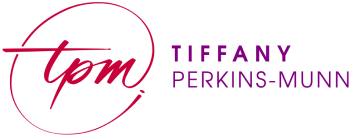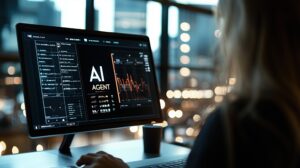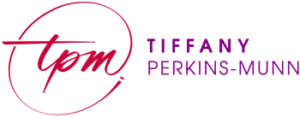How do AI-driven resume screening and job matching algorithms improve the hiring process? What are the benefits and limitations of using AI for job matching? How can job seekers optimize their resumes to improve their chances in AI-powered job matching systems?
In today’s competitive job market, AI-powered resume screening and job matching algorithms have transformed how companies identify top talent. These tools use applicant tracking systems (ATS), natural language processing (NLP), and machine learning to streamline the hiring process, allowing recruiters to efficiently filter and rank candidates based on skills, experience, and other key criteria. By automating resume screening, organizations can reduce human bias, improve candidate-job alignment, and significantly speed up the recruitment cycle. However, over-reliance on keywords and the risk of system manipulation present challenges that employers must navigate to ensure a fair hiring process.
Job matching algorithms take things a step further by proactively connecting candidates with suitable job opportunities. Platforms like LinkedIn and Indeed leverage AI-driven recommendation engines to analyze a job seeker’s profile, preferences, and search history to suggest roles that align with their qualifications and career goals. As AI continues to evolve, future advancements may focus on assessing soft skills, improving cultural fit, and integrating ethical oversight to ensure hiring decisions are not only fast and efficient but also fair and inclusive.
Today’s hiring process looks significantly different than it did just a few years ago. Nowadays, in the fast-paced job market, technology plays a pivotal role in streamlining recruitment.
Employers often receive hundreds, sometimes even thousands, of applicants for a single role, and manually sifting through all of these can be nearly impossible. Beyond being time-consuming, manual review can also be prone to human bias and inefficiencies.
Enter: AI-driven screening and job matching algorithms. This tech has transformed the hiring landscape, allowing recruiters to identify top talent faster and more accurately. Data scientists use AI and machine learning to create job-matching algorithms that help employers match candidates to roles based on a detailed analysis of their skills and experience.
These AI-powered tools offer numerous advantages, making resume screening and hiring more efficient. In this blog, we’ll explore how these algorithms work, their benefits and challenges, and what the future of AI-driven job recruitment looks like.
Table of Contents:
How Resume Screening Algorithms Work
Job Matching Algorithms: How They Connect Candidates & Employers
Scoring Systems & Ranking Candidates
AI-Driven Recommendation Engines
Benefits of AI-Powered Resume Screening & Matching
- Efficiency in Handling Large Applicant Roles
- Reduction of Human Bias in Initial Screening
- Improved Candidate-Job Alignment
- Authenticates Candidates
The Future of Resume Screening & Job Matching
Advancements in AI & Deep Learning
Focus on Soft Skills & Cultural Fit
Ethical Considerations & Human Oversight
How Resume Screening Algorithms Work
Because hiring managers receive so many applications, odds are, before they even look at a resume, it likely passes through an applicant tracking system (ATS). This automated software helps filter and rank candidates based on keywords, phrases, qualifications, and other predetermined criteria. These systems are complex and impressive, and they rely on several key technologies to operate and ensure each resume is reviewed carefully and efficiently.
- Keyword Matching & Natural Language Processing
- Machine Learning & Continuous Improvement
1. Keyword Matching & Natural Language Processing
Keyword matching is the most fundamental feature of resume screening algorithms. In the system, employers can specify critical skills, job titles, certifications, qualifications, and other essential elements they want in an ideal candidate. The ATS will then scan the resumes to identify matches. This approach is beneficial for weeding out irrelevant resumes and can cut down on the time it takes to go through piles and piles of applications. That said, this process can sometimes overlook strong candidates who meet the job criteria but use different wording to describe their experience that doesn’t match the keywords.
Modern ATS uses natural language processing (NLP) to achieve more accurate job matching. NLP enables machines to understand the meaning behind words rather than solely relying on keyword matching. It essentially enables tech to understand human language in a deeper way, allowing it to pull more meaningful insights and connections. Using NLP is a good way to ensure relevant, qualified candidates move forward in the hiring process and don’t fall through the cracks solely based on the wording they use in their resumes.
For example, if you listed “marketing manager” as a keyword, but a candidate called themselves a “promotional manager,” a system outfitted with NLP would recognize this as an equivalent and ensure the candidate stays in the running.
2. Machine Learning & Continuous Improvement
Advanced resume screening tools also use machine learning to further enhance their decision-making abilities. Systems outfitted with machine learning can analyze past hiring data and learn which resumes led to successful hires, adjusting their screening criteria accordingly. Over time, machine learning algorithms improve themselves, getting better at identifying strong candidates without too much human intervention, all while increasing efficiency and streamlining the hiring process.
Job Matching Algorithms: How They Connect Candidates & Employers
Resume screening algorithms focus on filtering applicants for specific roles. On the other hand, job matching algorithms take a much broader approach, recommending job opportunities based on a client’s profile. These algorithms are prevalent on job platforms like Indeed, LinkedIn, and other AI-driven hiring venues.
For example, on LinkedIn, you can set preferences and receive alerts for specific types of jobs, as well as jobs based on your skills. Say you work in marketing, and your profile outlines all your marketing experience and relevant skills. LinkedIn will then send you alerts for open positions that could fit you well. These recommendations will also appear when you’re applying for jobs, letting you know how good of a fit your profile is for the job in question.
Job matching algorithms evaluate various criteria to pair candidates with job openings that fit them best. These criteria include:
- Skills & Experience: Matching the candidate’s qualifications with the job description.
- Education: Determining whether a candidate’s academic background meets the role requirements.
- Location & Work Preferences: Recommending jobs based on proximity and/or remote work flexibility or preferences.
- Cultural Fit: Some platforms even integrate personality assessments to determine whether candidates align with the company culture.
Scoring Systems & Ranking Candidates
Once a job matching algorithm evaluates a candidate, comparing their application and resume to the role’s requirements, it assigns a score or ranking. Employers can then look through a list of the top-ranked candidates, helping them streamline their hiring decisions by directing their focus to only the most qualified applicants.
AI-Driven Recommendation Engines
Platforms like LinkedIn and Indeed use AI-powered recommendation systems to suggest job opportunities based on search history, past applications, and user behavior. Similar to how recommendation systems are used on platforms like Netflix and Spotify, the algorithms on LinkedIn and Indeed continuously improve upon themselves to refine their recommendations and increase the likelihood of connecting the right person with the right job.
Benefits of AI-Powered Resume Screening & Matching
AI-driven hiring solutions and job-matching algorithms offer several advantages for employers and job seekers alike. Some of the most significant benefits this tech has to offer include:
- Efficiency in Handling Large Applicant Pools
- Reduction of Human Bias in Initial Screening
- Improved Candidate-Job Alignment
- Authenticates Candidates
1. Efficiency in Handling Large Applicant Roles
In a traditional recruitment process, it can take weeks—even months—to sort through applications. AI tools can analyze thousands of resumes in mere minutes, significantly reducing hiring time and eliminating delays caused by human fatigue or overwhelmed schedules. Using tools that help shorten the hiring cycle is especially beneficial for large corporations, staffing agencies, and industries with high turnover rates.
2. Reduction of Human Bias in Initial Screening
Human bias—both conscious and unconscious—is a significant challenge in hiring. AI can help mitigate this challenge by focusing on objective job matching criteria, like the candidate’s skills and experience, rather than subjective factors like their name, gender, or ethnicity.
It’s essential to remember that AI isn’t completely bias-free. That said, it’s still a valuable tool for reducing bias in hiring decisions and creating a far more level playing field so long as it’s properly trained and monitored.
3. Improved Candidate-Job Alignment
Candidate-job alignment is a fundamental part of job matching. It involves analyzing keywords and other criteria to ensure candidate profiles match the job description. Solid candidate-job alignment helps improve job satisfaction, which inherently helps reduce turnover.
4. Authenticates Candidates
These AI tools can help recruiters validate and authenticate a candidate’s claims by analyzing vast amounts of public data from professional networks and social media platforms. For example, in their application, someone may say they have 10+ years of experience in the field, but a thorough analysis across the web and various platforms might find they only have seven years under their belt. This helps filter out applicants who don’t have authentic qualifications so recruiters can focus on those who do qualify.
Challenges & Limitations
AI-powered hiring and job matching tools have great benefits, helping enhance the recruiting process with better, faster, more successful hiring decisions. However, these systems aren’t without flaws. Technology is constantly evolving and changing, but there are some challenges and limitations that are important to note:
- Risk of Bias
- Over-reliance on Keywords
- Potential for System Manipulation
1. Risk of Bias
While AI algorithms can undoubtedly help minimize bias, they can also perpetuate bias. These systems learn from historical hiring data, which may contain inherent biases. For example, if past hiring practices favored a certain demographic—whether intentionally or not—the algorithm could pick up on this and replicate these biases. To address this issue, these systems must be consistently monitored by humans, who can step in and adjust the training data as needed.
2. Over-reliance on Keywords
Many ATS still rely heavily on keyword matching, which, again, can result in strong candidates being filtered out simply because of the word choice on their resume. Over-relying on keywords in this way can cause your organization to miss out on great, qualified job candidates who could bring significant value to the business.
3. Potential for System Manipulation
Knowledge of job matching systems and AI hiring tools isn’t reserved for data scientists and recruiters. These tools are common and have been around for quite a while now, and job seekers have learned how to trick ATS by stuffing their resumes with relevant keywords, whether accurate or not. Some applicants can even be as sneaky as adding keywords in invisible text so only the ATS picks them up, not the discerning eye of a human recruiter.
Even as the technology itself continues improving and becoming better at detecting these tactics, system manipulation is still an ongoing challenge, and recruiters must be aware of it to ensure that each application review is a fair assessment.
The Future of Resume Screening & Job Matching
Nowadays, it feels like there’s a new development in AI technology each time you look at the news. As this tech continues to evolve and more organizations implement these tools, the future of hiring could see far more sophisticated, fair job matching and recruitment tools, some of which could even be more human-centric.
Advancements in AI & Deep Learning
Deep learning, which is a subset of machine learning that uses complex neural networks to simulate human decision-making, is making AI tools more nuanced. For hiring tools specifically, deep learning allows them to assess resumes based on context rather than keywords. In the future, these systems could better evaluate a candidate’s experience rather than just how well it matches on paper.
Focus on Soft Skills & Cultural Fit
AI hiring tools traditionally focus on hard skills and experience. However, soft skills like leadership and communication are just as critical to job success and determining cultural fit. They can sometimes tell you more about an applicant than their hard skills and experience can. Future AI tools could assess these traits with sentiment analysis and behavioral assessments to create a more comprehensive view of the applicant.
Ethical Considerations & Human Oversight
The more AI is used across industries and disciplines, the more ethical concerns arise, and the same is true for hiring processes. The primary concerns revolve around data privacy and fairness. To mitigate this, human oversight is absolutely necessary. Algorithms need to be trained to make unbiased decisions and evaluate candidates holistically rather than solely basing decisions on the automated rankings the ATS generates.
Conclusion
AI-powered resume screening and job matching algorithms are revolutionizing the recruitment process, helping employers make faster, more efficient, and maybe even fairer hiring decisions.
This tech can help employers sift through thousands of applications extremely quickly, with some degree of reduced bias and better candidate-job alignment.
AI and technology are ever-changing, and these tools will continue to evolve. The future of hiring could be AI-driven, with recruiters likely blending automation with human oversight to ensure hiring decisions are data-driven and fast while still maintaining a human focus.
Embracing these innovations—while being aware of their potential limitations—can help businesses build more effective and inclusive hiring processes that allow them to hire the best person for the job.









One Response
I see something genuinely special in this internet site.